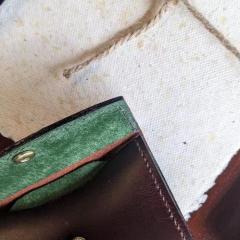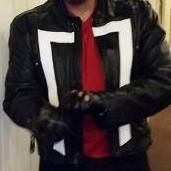
HCM
Members-
Posts
47 -
Joined
-
Last visited
Profile Information
-
Gender
Male
Recent Profile Visitors
5,600 profile views
HCM's Achievements

Member (2/4)
-
Sure thing, I'll drop you an email.
-
Are you looking for new or used? Do you have a decent budget? Do yo know how wide you need it to be? That's pretty much all you need to know to start hunting.
-
I don't know nearly enough about what's out there to recommend anything for you. I have an older model Camoga and it's all I've ever used. All I can say is that you should really get your machine from a trustworthy dealer. I got mine from an unknown dealer who seemed like a good guy, but he took me to the cleaners. I specifically asked about the condition of some expensive parts and he sad they had plenty of life left on them. Well, the parts that I asked about were worn beyond usable when the machine arrived. I ended up spending thousands on the parts and service to put the machine back into running condition. I know this machine in and out now, but that took time. I would highly recommend calling Campbell-Randall if you're serious about getting a splitter. They have new and used machines and they have never steered me wrong.
-
No problem. And once you have the bridge lined up with the edge of the face, you should be able to see the start/stop points when you're stitching from the face. If you can't see where to start and stop clearly enough, just run the machine needle through the wallet from the inside to mark the points. Just make a hole in each position and when you flip it over to stitch, you'll have holes right at the points you want your stitch to start/stop. Good luck, let us know how it goes.
-
Anthony, You're pattern is different than mine, but you're so close to success. Look at this picture, it's just a quick mockup, I hope I got it right. The top is your pattern, bottom is my recommendation. Try changing it to look more like the bottom and you will see a better result. And when you stitch the little middle bit on the interior, don't bother with backtacks, just stitch it a few stitches beyond the fold on both sides and it will look like a continuous stitch on that piece than blends into the rest of the wallet, instead of something that you're struggling on. Once the face is folded over, the tacks will have no purpose on a structural level, and they just look ugly.
-
I see from your signature that you got a skiver. Did you use it on the new wallets that didn't turn out so well? i would think you'd be having better results now, not worse. What are you shooting your photos on? I shoot (obviously not the snapshots I posted here) on a Nikon D300s with 3 off camera flashes. White background can be very difficult to achieve proper exposure with. I do my best to get a 255,255,255 background, but I almost always end up having to make adjustments in post when the subject is placed directly on the background surface. The only way I have ever truly gotten a white background on the RAW image without overexposing the subject is to shoot on a clear glass or lexan surface a good 5-6 feet in front of the white background. I use 1 or 2 speedlites to properly expose the subject with another speedlite only on the background, overexposing it by a couple stops. This makes a perfect, blown out white background that looks almost perfect on the RAW image. Give that a try and I think you will be amazed at the results. You don't need to have strobes to do it, I've seen it done with continuous lighting too. Just make sure all your bulbs are matching to avoid white balance issues. If you want any tips on white background photography, I'd be glad to send you some links I've used as reference.
-
Lou, You're wallet looks really good for a first attempt! Heck, it looks better than some final attempts I've seen! I see two issues you are having with your bridge bit. First, it looks like the leather is too thick. I know this brings us to your issue of skiving and you can't easily solve that until you get a skiver, but it's important to know that you will have an instantly better result when you get a proper skive. Once that leather is thinner, it won't buckle like that. Second, I see a patterning issue. If your interior met flush on the bottom with your exterior, you would have had a bend that covers the exterior fold. I'm attaching a couple poor images of my own wallet so you can see. With this style billfold, that part is not stitched, you did fine with that. But it is always going to look a little ugly and having the bend section cover it makes the wallet look much nicer.
-
I've never used a manual splitter, I only have a band knife. I can't imagine you would want to ever try to split wet leather with a manual splitter, though. If wet, the leather will stretch and stick, and the blade will have a hard time cutting it soggy. I wouldn't think you should have any issues splitting to that thickness, just make sure the blade is extremely sharp.
-
Before I got a band knife splitter, I did exactly what Andrew recommended. You will be limited to the width of the foot and stone on the bell knife machine, but you can run a piece through the machine multiple times to split wider pieces if you have to. However, there will be some lines where each new split starts. Depending on your leather and application, the lines may or may not show through to the top grain, but you'd have to test it out to be sure. In my application, this splitting method made my leather unusable, so I got a band knife splitter. If you really need a clean split and don't have the money to buy a band knife splitter, I'd recommend sending the leather to someone to split it for you. We do splitting and clicker die cutting here and the cost to our customers is minuscule compared to what it would take to do it on their own. Ask around here if there is someone in your area who can do this for you, I'm sure you'll find someone. Worse comes to worst, you can fit a lot of leather in USPS flat rate shipping box and ship it to someone very cheaply.
-
Thread Looping When Going From Reverse To Forward Stitches
HCM replied to HCM's topic in Leather Sewing Machines
You mean make sure the needle doesn't rub on the feet? I have done that before. I remember setting up everything on a machine once only to find that the hook was way off because the needle rubbed on the raised foot when I timed it. Ever since then, I take the feet off or make sure the feet are down when timing. :-) -
Thread Looping When Going From Reverse To Forward Stitches
HCM replied to HCM's topic in Leather Sewing Machines
Ok, it was my mistake after all. The problem was the needle bar height. I swear when I put it in that I had it at the right depth, it looked right but it was just a hair off. I get the feeling that the 0.5mm I was off made a bigger issue on the Adler than my other machines. It seems to be a very finicky machine that wants everything perfect before it will lay a nice stitch. Or, maybe it's just me. Anyway, got her working well now. Thanks for the tips, Art. -
Thread Looping When Going From Reverse To Forward Stitches
HCM replied to HCM's topic in Leather Sewing Machines
I normally do the switch on the upstroke, but maybe not exactly 1/4" up. I checked everything again, and it looks like the needle bar might have been a little low after all. I will try it as you suggested and report back. -
I am working on an Adler 269. Installed some new parts including a new hook, and now I have this one issue of the thread looping on the underside of the workpiece. Stitches are perfect until I go from reverse stitching to forward stitching. Just the one stitch it is on at the point of switching to forward stitching is the one that loops. It happens on about 75% of the time, and only at that point. I have tried releasing the reverse bar at different pints in the stitch to see if it has any effect, and it doesn't appear to. Is there somethign obvious that I am missing that might cause this? I'd appreciate any tips because it's got me stumped!
-
Hi, I sent you a private message on this, check your inbox!
-
I had my dealer send me an actuator so I could add air lift to my machine and I am having trouble figuring this out. I have another machine with an add-on air lift, and it was a totally different setup than what he intended this to be. I tried calling him, but they closed for the weekend about 15 minutes before I realized I have no idea what I'm doing! Hoping someone can help me here so I can perhaps set this up this weekend. So, here is the machine And here are the parts he sent me He told me I would have to tap some threads into the machine, but I don't really know what that would be for. The chain on the actuator is really long, and I can't figure out why it would have that long chain on there if the actuator is to be mounted on the tabletop. My other machine has the actuator mounted on the table on sort of a hinge so when it pulls the presser bar down it can flex a bit on the hinge. But this one looks like he intended it to be mounted flat, and I just don't know how I am supposed to get it to pull the presser bar when it is mounted perpendicular to the machine. I hope someone can clue me in here!



